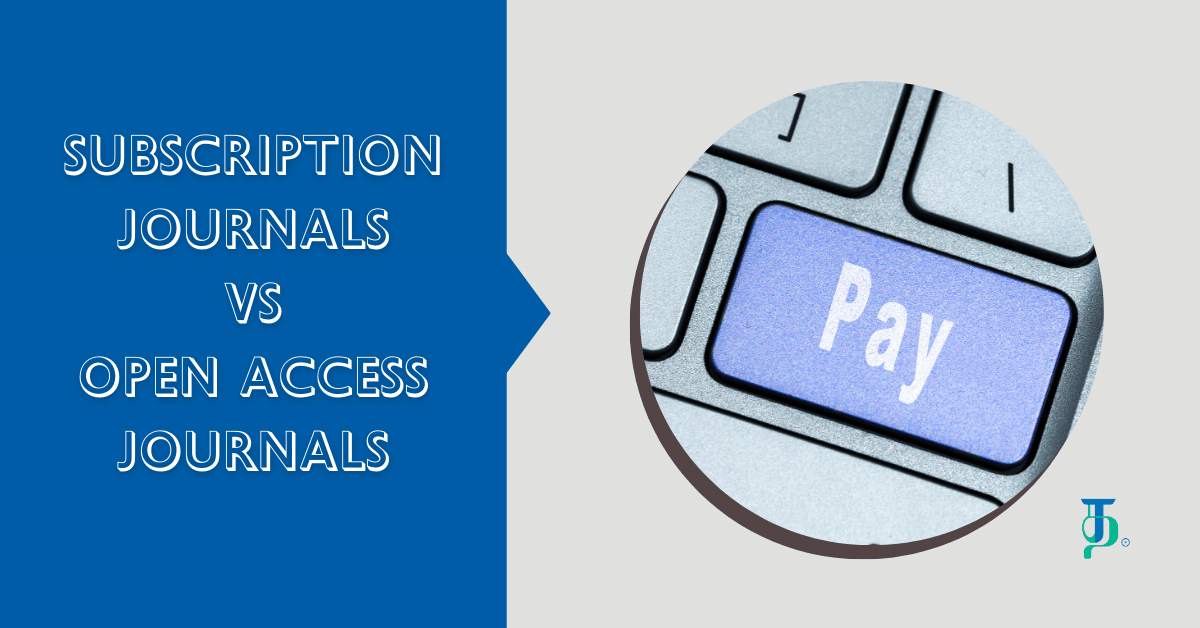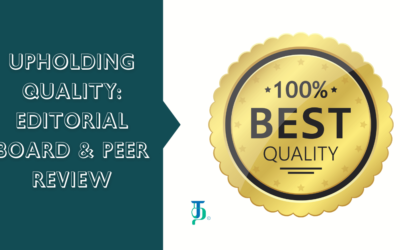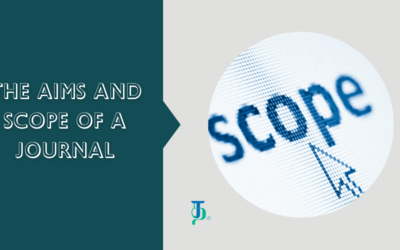In our previous article, we provided an overview of the different publishing models. As a quick recall, there are four types of journals:
- subscription journals, the traditional/conventional model,
- open access journals, where the publication charges are borne by the author so that the reader can access for free,
- transition journals, traditional journals that will become open access journals, and
- hybrid journals, journals that provide both options for authors.
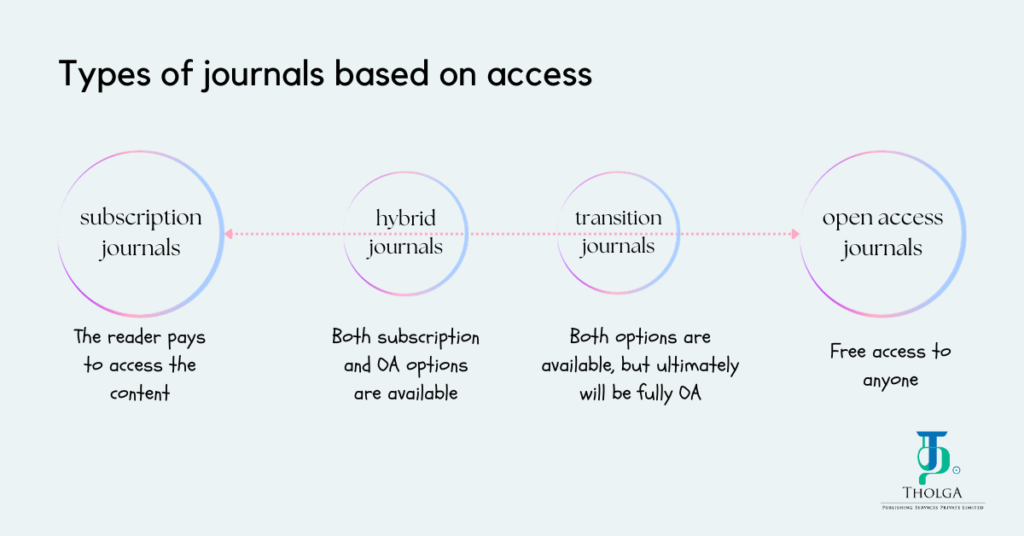
Even though there are four major types, they all fundamentally fall under two: subscription vs open access. As a researcher, how do you decide which publishing model is better, the subscription or OA model?
To take an informed decision, you need to understand what they are and the pros and cons of each model.
So, in this post, we will compare subscription and OA models and understand a bit more about their advantages and disadvantages.
Subscription-based models
The subscription model is often known as the traditional or non-open access model. In this model, the author doesn’t pay anything for publication, but a reader has to pay in order to access the article. This is sometimes called a paywall. Basically, the author transfers the copyright of the article to the publisher, who sells it to earn profits.
Until some years ago, prestigious journals often followed a subscription model, and getting published in these journals can be seen as a mark of prestige for institutions and researchers. Figure 1 shows how the traditional model of publishing works. As we can see, one of the most significant disadvantages is that the research progresses in a snail’s pace. This is because the paywalled content limits the number of researchers who read your article, reducing your article’s reach.
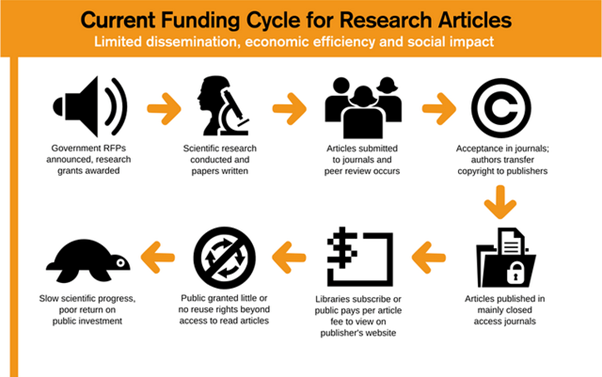
Let’s now take a quick look at the advantages of the traditional subscription model:
No author publication charges: Subscription journals do not charge any fee for publishing articles, so authors do not have to worry about article publication charges. Publishers usually receive a steady income from subscription fees, allowing them to cover the cost of content production, editorial processes, and other operational expenses.
Peer review process: Subscription journals often have stringent and rigorous peer-review processes before approving an article for publication, ensuring high-quality and reliable research. As you know well, the peer-review process stands as a gatekeeper of research quality.
However, there are some disadvantages too:
Slow progress of research: Restricted access to research findings delays the dissemination of research findings. This period during which only subscribers can access articles (or those who pay for individual articles) is called the embargo period, during which only subscribers or those who are willing to pay only can access the publications.
This delayed access is meant to provide an advantage to subscribers who have paid for immediate access to the publication compared to non-subscribers. Authors often find it frustrating, as they have to refrain from sharing their research with the public immediately after publication.
Rising costs: Subscription models can limit access to research articles to those who can afford them, creating barriers for researchers and institutions with limited financial resources.
Lower citation: Because of its limited access, subscription-based journals only reach a lesser audience. Hence, their citation rates are lower compared to open-access research, which affects the h-index of a researcher. An h-index indicates how often and how many publications of an author have been cited. So, higher citation rates often mean a good h-index for the researcher.
Open-Access Models
Open-access publications are freely accessible to the public without subscription fees or paywalls, allowing a broader audience, including researchers, students, policymakers, and the public, to access and benefit from the research. However, instead of the journal accepting the costs of publishing, the author bears the cost (directly or indirectly through funding agencies).
So, its primary advantage is that it is free for all readers, and there are many more as mentioned below:
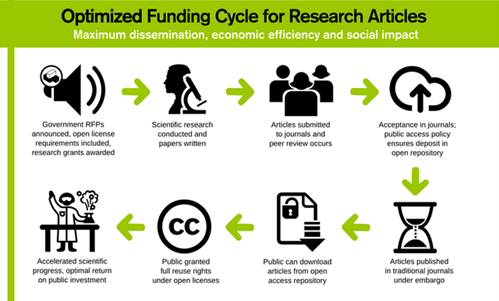
Faster research progress: Open-access publishing can expedite the dissemination of research findings, as articles are available online as soon as they are accepted for publication (called by many names; most commonly the online-first version), eliminating the delays associated with traditional subscription models.
Larger visibility and increased citations: Publishing via open access rather than through subscription journals can help you reach a larger audience with their research. A rise in the number of readers might lead to an increase in the number of citations for you. Studies [i] have shown that open-access articles tend to receive more citations, potentially increasing the impact of the research.
Remember, the number of publications doesn’t matter anymore; it is the number of citations that an author receives that matters most. Open access facilitates this possibility.
Collaboration and diversity of research: Open access facilitates collaboration and knowledge exchange on a global scale by removing barriers to access and allowing researchers from different regions and backgrounds to engage with each other’s work.
On the other hand, there are some disadvantages or limitations associated with open access publishing:
Author publication charges (APC): If the end user does not have to pay to read an open-access article, then how do publishers make revenues? After all, they are in business to make money! Well, publishers charge the authors for publishing their work. The authors may pay from their pocket; their employers or a research grant can help cover these costs.
Many journals are accused of obscenely high APC that are beyond the reach of most independent researchers. As an answer to this accusation, many open-access journals offer discounted or waived publication fees for papers from low-income countries.
Remember, however, paying money for publication does not change anything else – especially, it doesn’t reduce the rigour of the peer-review process. The only shift is in who bears the cost of publication.
Predatory journals
While not a problem for reputable journals, the open access model has led to the emergence of predatory journals that exploit the author-pays model without maintaining rigorous peer-review processes, raising concerns about the quality and legitimacy of some publications. When a publisher’s revenue comes from publication fees, they may prioritize quantity over quality. (We will discuss the difference between genuine OA journals and predatory journals in our next article.)
The publishing landscape has been constantly evolving, addressing, and overcoming the challenges associated with exclusive subscription-based access while embracing the principles of open access for wider dissemination of research. Open access has, steadily but strongly, been influencing the publishing landscape, in the last 30-40 years and has now become a strong alternative to the traditional model.
Ultimately, even though the choice between subscription-based and open-access models is influenced by many variables, for the author, it boils down to affordability and the desire to take his or her research to a larger audience.
[i] https://www.ncbi.nlm.nih.gov/pmc/articles/PMC8221498/

